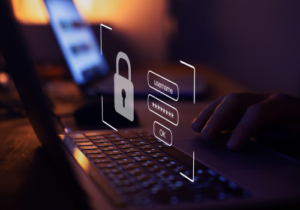Top Insights
Cybersecurity threats to watch in 2025: Emerging risks and response strategies

The digital era has ushered in an age of unparalleled connectivity and innovation, but it has also introduced a rapidly evolving threat landscape. In 2025, cybersecurity remains a critical concern for individuals, companies, and governments alike. New threats are emerging as technologies advance, and malicious actors become more sophisticated. This blog explores the top cybersecurity threats in 2025 and examines how organizations and governments are tackling them.
1. Ransomware 2.0: More sophisticated and targeted attacks
Ransomware attacks have evolved into a more targeted and destructive form, often referred to as “ransomware 2.0” Attackers are now focusing on high-value targets like critical infrastructure, healthcare systems, and financial institutions. These attacks not only lock systems but also exfiltrate sensitive data, increasing the pressure on victims to pay the ransom.
Response strategies:
Governments and organizations are prioritizing data backups, implementing sticker access controls, and conducting frequent vulnerability assessments. The global push for regulations discouraging ransom payments is also gaining traction, alongside the development of AI-driven tools to identify suspicious activities early.

2. The rise of AI-powered cyberattacks
Artificial intelligence (AI) is a double-edged sword in cybersecurity. While it helps defenders identify threats, cybercriminals are leveraging AI to enhance their attack methods. From creating highly convincing phishing emails to automating the identification of network vulnerabilities, AI is empowering attackers to scale their operations.
Response strategies:
To counterattack this, organizations are investing in AI-driven security systems that can analyze patterns, detect outliers, and respond in real-time. Governments are collaborating with tech companies to develop ethical AI frameworks that reduce the misuse of AI for malicious purposes.
3. Supply chain attacks: Weak links in the chain
Supply chain attacks, where attackers infiltrate systems through third-party vendors or service providers, are becoming increasingly prevalent. These attacks exploit the interconnected nature of modern business ecosystems, targeting smaller vendors with weaker defenses to access larger organizations.
Response strategies:
Companies are adopting zero-trust architectures, ensuring that every entity in the supply chain is continuously verified. There is also a growing emphasis on third-party risk management, with stringent vetting processes and regular audits of vendors’ security practices.
4. Quantum Computing Threats of Encryption
Quantum computing, while still in its infancy, poses a potential threat to current encryption methods. When fully realized, quantum computers could break widely used cryptographic algorithms, compromising the security of sensitive data.
Response strategies:
A government and research institutions are working on quantum-resistant cryptographic algorithms. Organizations are advised to prepare for a “quantum-safe” future by staying updated on developments in post-quantum cryptography and planning gradual migrations to secure systems.
5. Deepfake Technology and Social Engineering
Deepfake technology, which uses AI to create hyper-realistic fake images, videos, and audio, is being increasingly used in cyberattacks. From impersonating executives in business email compromise (BEC) scams to spreading misinformation, deepfakes are challenging traditional security measures.

Response strategies:
Companies are training employees to recognize and report unusual requests or messages. Governments are enforcing sticker regulations on the misuse of deepfake technology, while companies are developing tools to detect and flag manipulated content.
6. Internet of Things (IoT) Vulnerabilities in smart devices
The proliferation of Internet (IoT) devices has expanded the attack surface for cybercriminals. Many smart devices lack robust security features, making them easy targets for attackers looking to compromise networks or launch botnet attacks.
Response strategies:
Manufacturers are being urged to adopt sticker security standards for IoT devices, including secure-by-design principles. Users are advised to regularly update firmware, change default passwords, and segment IoT devices from critical networks.
7. Nation-state cyberattacks: A Growing geopolitical threat
Nation-state cyberattacks are becoming more frequent and sophisticated, often targeting critical infrastructure, government institutions, and financial systems. These attacks are driven by espionage, sabotage, or financial gain.
Response strategies:
Governments are increasing investments in cyber defense capabilities and international collaboration to combat cyber threats. The establishment of cyber treaties and norms for state behavior in cyberspace is gaining momentum, although enforcement remains a challenge.
8. Insider threats: A persistent challenge
Insider threats, whether malicious or accidental, continue to be a significant concern. Employees with access to sensitive data can unwittingly or deliberately compromise an organization’s security.
Response strategies:
Organizations focus on user behavior analytics (UBA) to detect outliers in employee activities. Regular cybersecurity training and clear policies regarding data handling are also critical in mitigating insider threats.
Also Check – Want to Grow Your Business in The Digital World? Know How an SEO Company Can Come to Help?
How Governments and Companies are addressing the threats
1. Legislative measure:
Governments worldwide are enacting sticker cybersecurity laws and regulations. For example, the European Union’s General Data Protection Regulation (GDPR) continues to influence data protection law globally, while new legislations aim to secure critical infrastructure.
2. Public-private partnerships:
Collaborative initiatives between governments and private entities are on the rise. These partnerships focus on information sharing, threat intelligence, and joint responses to cyber incidents.
3. Cybersecurity awareness campaigns:
Raising public awareness is key to mitigating threats like phishing and social engineering. Governments and organizations are running campaigns to educate citizens and employees about best practices.
4. Investment in cybersecurity innovations:
Companies are allocating significant resources to research and development of advanced cybersecurity solutions. Technologies like blockchain, AI, and machine learning are at the forefront of this innovation.
Recent Posts
Categories
- Accessories5
- Apps23
- Bollywood282
- Business33
- Cars8
- Celebrities62
- Cricket20
- Digital Marketing29
- Education549
- EML India52
- EML UK6
- Entertainment394
- Events46
- Featured4
- Finance11
- Fitness4
- Guest Posts187
- Health30
- Inspiration4
- Jobs Recruitment31
- Lifestyle38
- Merry Christmas9
- Mobile Phones25
- News35
- Prepapration Tips23
- Relationship4
- Results87
- Social Media13
- Sports26
- Startups5
- Tech1
- Technology146
- Travel23
- Uncategorized2
- Web Design1








Leave a comment